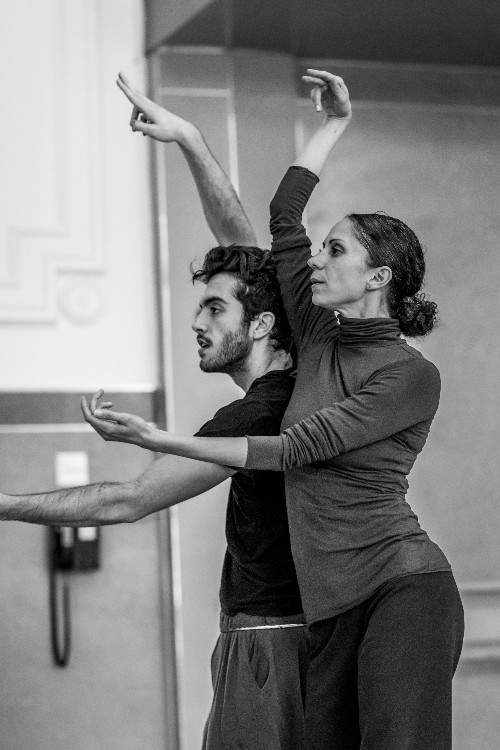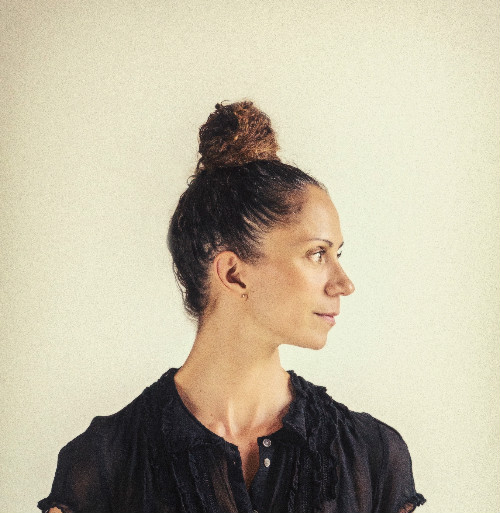Who I Am Is the Art I Make
Maurya Kerr is a San Francisco-based choreographer, educator and dancer, as well as the founder and artistic director of tinypistol, her project-based contemporary dance company. She weighs in on the many meanings and modes of contemporary dance, especially in our new political climate. This interview is part of a series on contemporary dance.
~~
How would you define contemporary dance to someone without a background in dance?
I would say it’s (ideally) the dance of now; contemporaneity expressing itself bodily; movement belonging to the bodies, art practices, potentialities, politics, sorrows and hopes of the present.
How would you recommend a student train for a contemporary dance career?
Learn everything you can about movement and the body: hungrily invest in ballet, modern, improvisation, gaga, somatic methods, cross-training, and and and. See as much (diverse) dance as possible, as well as theater, movies, art, music and lectures. You must obsess about your technique in order to master your instrument, but also remember that who we are as people manifests in the art we produce; selfishness and myopia show up onstage. We dance who we are, so attempt a generous, humble, thoughtful and creative life. Read books. Engage in political action. Fall in and out of love, poetry and leaves. Experience the world. Listen. Empathize. If we consider temporalities to be relative, then in order to be an artist of the contemporary and place ourselves in the now, we need to have an understanding of the past as well as a vision for the future.
When did contemporary dance emerge? Do you consider it a growth out of modern and/or post-modern dance?
I’m not sure I feel qualified to answer that within an accurate historical context. I do know that humans are constantly borrowing, learning from, getting inspired by, stealing, colonizing, and vice versa. As people and dancers, we are products of what has come before us; history, credited or appropriated, is alive within us all. Within that paradigm, contemporary dance emerges from both modern and post-modern traditions, and also from ballet, African diasporic, Native American and African American traditions (as well as countless others). Genealogical or artistic purity of lineage does not exist.
Photo by Stephen Texeira
Are there successful funding models for contemporary dance?
Whim W’Him in Seattle comes to mind as a highly successful model. With director Olivier Wever at the helm, the company has rapidly grown in terms of consistent seasons, an expanding presence in the community, an innovative commissioning project to bring in outside choreographers (disclaimer: I was a choreographer brought in under the company’s inaugural Choreographic Shindig), a vibrant and engaged board, and increasing financial support for the company’s dancers. But that type of growth entails grant-writing, fundraising, board meetings, audience and donor cultivation, etc., in addition to artistic leadership. Directing a 501(c)(3) non-profit organization is a radically different life-choice than directing a project-based company. While my current funding model isn’t necessarily successful (but then comes the question of how one defines success…), non-profit status is not a beast I choose to tackle (and I’m simply horrific at schmoozing).
How do you perceive your work contributes to the contemporary dance arena?
I hope that my work moves people and has a contributive, meaningful presence. Trying to be self-evaluative (without arrogance or false humility), I think my work has a distinctly feminist perspective, a unique movement language, humanity, and honesty.
What does the future of contemporary dance look like? In what direction do you see it evolving?
We are days away from a new and highly oppressive governance. Historically, artistic communities thrive under fascist regimes, and I hope that proves true as we navigate these next four years of oppression. Artists must remain the holders of revolution and compassion. As choreographers, dancers and educators, we must insist on the diversity of human experience that those overwhelmed by hate, fear and cowardice threaten to eradicate. We, as a people, need a more diverse representation in our communities (artistic and otherwise), so instead of being complicit in normalizing privilege off and onstage, let’s make otherness the new status quo. I know I am more committed than ever to my blackness and femaleness, and wanting that to reflect: who I am is the art I make.
Why is dance the least funded and respected of the arts? Perhaps it’s because, as a mentor of mine stated, dance always disappoints, it never lives up to its promises. In the virtual world, dance is pure potentiality: choreographers employ such beautiful and affecting language in programs and grant proposals to describe their work. But the de facto truth is that too often abstract shape-making kills the expectancy with which I enter the theater. My hope is that we can be anti-propaganda and anti-politician, but also be promise-keepers. We certainly don’t need more steps; we need to become neologists, not sly re-hashers of the old and tired.
I want to invent new languages and worlds that simultaneously expose dystopia and propose utopia. I want to witness and participate in dance that can teach me how to live and love… how to be a better human. My hope is that as artists we can be osmotic, masticatory and generative. In other words: wildly empathetic, thoughtful and imaginative. I want and I hope. How to transform that rhetoric into actuality? What does that look like? I’m not sure.
Onward.
Photo by Andrew Weeks
~~


